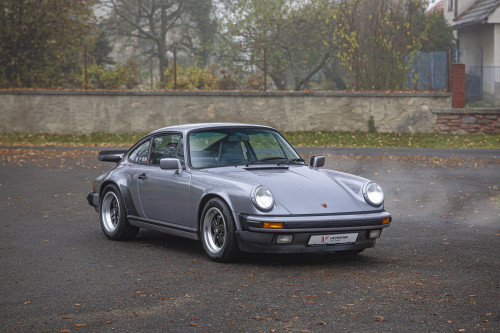The 2+2 327 cabriolet was unveiled to the public in the winter of 1937 but was not immediately successful. It was not until the 327/8 or 327/28 version in 1938 with its V-shaped cylinder head and three carburetors (80hp instead of 55hp) that sales took off. The arrival of the coupe the same year will also play its part in the success of the model.
The 327 is the descendant of the 320, 321 and 326 (produced simultaneously).
Thinner and more elegant than the latter thanks to its much more drawn wings and shorter wheelbase as well as its headlights nicely integrated into the wings, it is nevertheless based on the same architecture, namely a low-body chassis on which the bodywork is bolted, which was then supplied by either Ambi-Budd of Berlin-Johannisthal or Authenrieth of Darmstadt. The gearboxes were either Hurth or ZF with the same gear ratio and fairly similar stages. From the 326, the 327 also inherited its six-cylinder engine although it received a slightly different cylinder head. This engine became legendary thanks to the exploits of the 328 Touring at Le Mans and the Mille Miglia, but also by equipping the Arnolt or AC Bristol and the first Bristol.
The Ambi-Budd body shop is dismantled and it will be Avtovelo in East Germany that will continue the production of the 321, 326 and 327. From 1946 to 1955, the 327 convertible was produced in Russia and by the EMW factories in Eisenach, producing about 500 units.
Already strongly coveted by the German leaders, the convertible 327 is regarded as one of the most beautiful German achievements and has certainly contributed to make BMW the most "Latin" of German brands.
As the certificate of the BMW archives indicates, our 327 was delivered on August 24, 1938 to Commander Priller in Müller, Dusseldorf in black color. Our example was completely restored and covered with an elegant blue and cream coat. The interior of this cabriolet is an invitation to travel to the late Art Deco era, the stylized dials as well as the clock on the glove box are functional. Mechanically, the 2.0L inline 6-cylinder engine with enough torque to propel the car beyond 100 km/h.
Our road test showed a car that drives almost like a modern car, with a synchronized gearbox and a very elegant body and German reliability.
Treat yourself to one of the rare 327 Cabriolet, a perfect compromise between a pre-war design and a very modern use. This car successfully participated in the 1.000 miles of Czechoslovakia race in August 2021.
| Production date | 24.08.1938 |
|---|---|
| Body Type | Cabriolet |
| Engine | 1.971 ccm, 81 PS, I6 |
| transmission | Manual |
| Steering | Left Hand Drive |
|---|---|
| Layout | Rear Wheel Drive |
| Color - exterior | Blue / Cream |
| Color - interior | Blue leather |
| Miles/Kilometers shown | 2.000 kms |
|---|---|
| Chassis / VIN | 73517 |
| Location - Country | Czech Rep. |
| Location - City | Hradec Kralove |
2-door cabriolet body type; RWD (rear-wheel drive), manual gearbox; gasoline (petrol) engine with displacement: 1971 cm3, advertised power: 60 kW / 80 hp / 81 PS; characteristic dimensions: outside length: 4501 mm, width: 1600 mm, wheelbase: 2751 mm; reference weights: base curb weight: 1100 kg; top speed: 150 km/h (93 mph)

Písek, Czechia

Jablonec nad Nisou, Czechia

Jablonec nad Nisou, Czechia

Písek, CZ

Písek, CZ

Písek, CZ